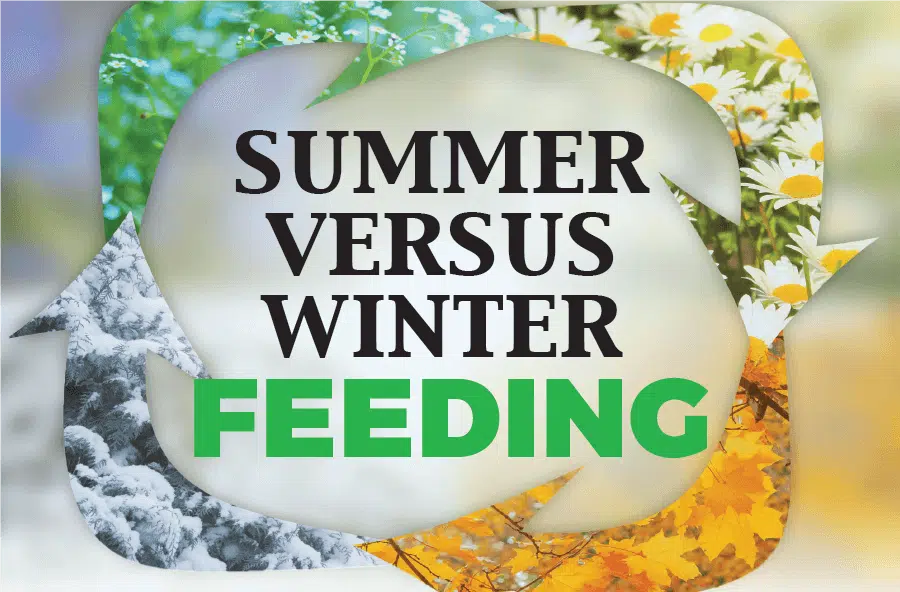Boom and bust cycles are a fact of life. Good times give way to tough times. Just when we think we’ve got life figured out, it throws us a curve ball and humbles us once again. Dairying is no different. Whether you are a pasture farmer or a total mixed ration (TMR) farmer, seasonal cycles of tough and easy (well, slightly less tough) times are a fact of life. For pasture farmers, the good times are when the spring flush is pumping, there is plenty of feed to go around, and temperatures are nice and moderate. The best times on a TMR farm are the cool winter months, when feed conversion rates increase and the effect of heat stress on our cows is less severe. Tough times for the grass systems come at the end of summer when wet feet and extended spells of hot weather wreak havoc with our herd’s foot health. The TMR farmers share a similar fate. The heat and humidity of summer drain the milk from our bulk tanks and make for awkward meetings with the bank manager.
Ride the cycle
There is, however, an upside to this cyclical life we lead. Seasonal cycles are usually predictable, which means they can be planned for and managed accordingly. If we choose not to have a plan, we will ride the roller coaster of feast and famine and, after a few brutal cycles, we will probably go bust. The trick to planning for these seasonal cycles is not to get bogged down in the detail. Approximately 80% of the seasonal variation can be accounted for simply by controlling 20% of your inputs.

Plan your season well in advance. Feed factories take two weeks to make a new formulation. A week is needed for paperwork, and three weeks to give all your specialists time to meet and plan. You should be planning your seasonal ration changes at least eight weeks before the change. It is also important to keep a central record of what you did, so that next year you can rely on your records instead of having to reinvent the wheel every six months.
Set clearly defined targets. If you run a TMR farm and are losing 20% of your milk during summer, your goal should be to halve this. If your pasture cows are always lame at the end of summer, aim to halve the rate of lameness this year. Define your situation.
Practical, on-farm tips and tricks to consider
Heat abatement in the collecting yard
Sixty per cent of your heat abatement can be done in the collecting yard, so set up sprayers, shade, and fans in order to take full advantage of this low-hanging fruit. Then use these strategies every time the temperature exceeds 21 °C.
Shade
Shade structures for your dry cows will pay you back handsomely in improved calf health, rebreeding success, and initial milk production per bite.
Optimum nutrition
A strategic summer mineral strategy that uses complexed minerals can be
used to control and improve immune response to heat. During the hottest
months, consider adding 720 mg of zinc from complexed sources and between 6 mg and 8 mg of complexed chromium to your ration. This improves gut integrity, reduces inflammation, improves energy metabolism, improves somatic cell counts, and boosts foot health.
Foot health
Dry cow trimming is critical to herd foot health. Road maintenance needs to be a planned event. For areas of high traffic, such as the concrete or roadway interface, don’t wait for winter to act – rather get this done monthly.

Setting targets for seasonal cycles
In order to set targets, you need to analyse where you are starting from. I don’t recommend you try to do this yourself. Mobilise your team of specialists to define your potential and then get them in a room together to hash out what strategies are available to you. Get them to do an analysis of potential losses, costs, and savings. Pick one or two of the best ideas and commit to the seasonal plan. Just remember that goals mean nothing unless they are regularly reviewed.
Conclusion
The old saying, “Fool me once, shame on you; fool me twice, shame on me”, is a reminder that summer and winter happen each year. If we are constantly taken by surprise by seasonal changes, it is no one’s fault but our own. Plan your work then work your plan. See you in 2020!

Alex Jenkins is a technical specialist in the ruminant team at Chemuniqué and holds a master's degree in animal science from the University of KwaZulu-Natal.










